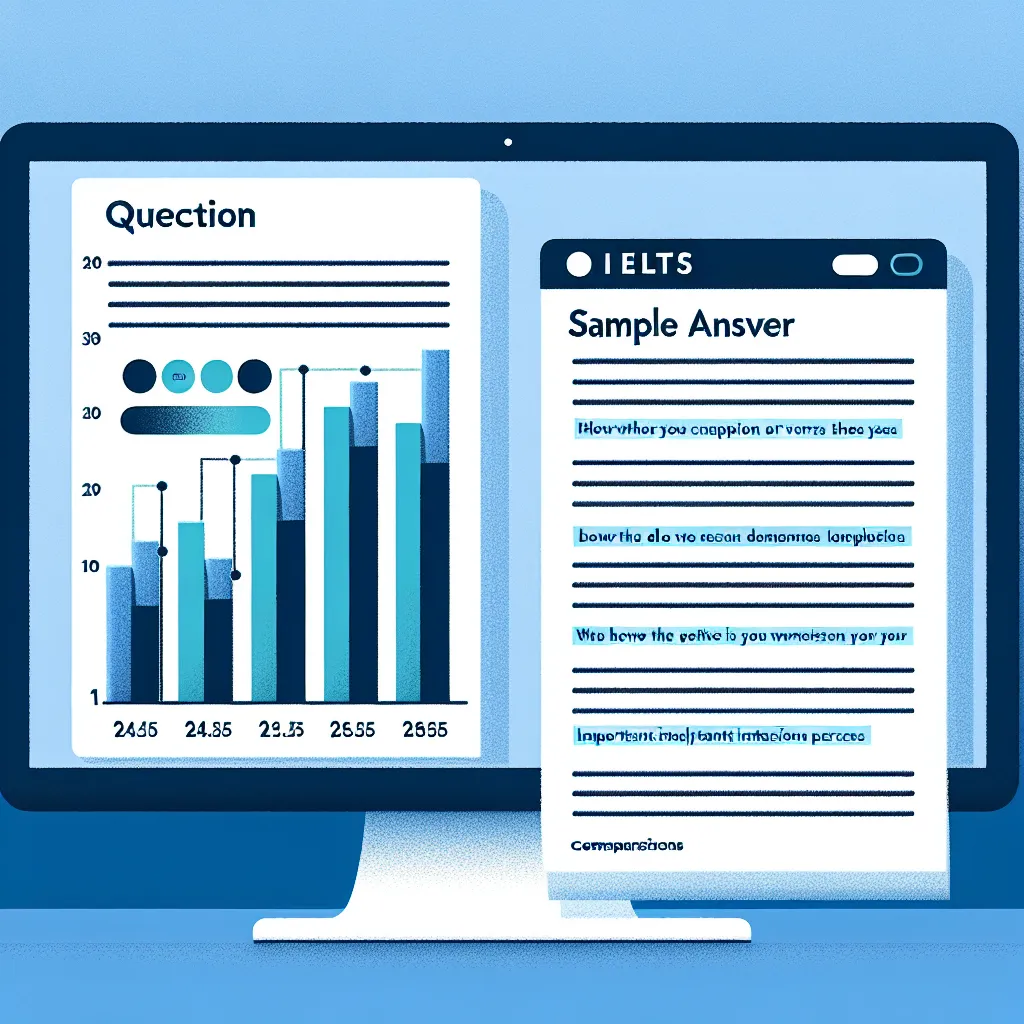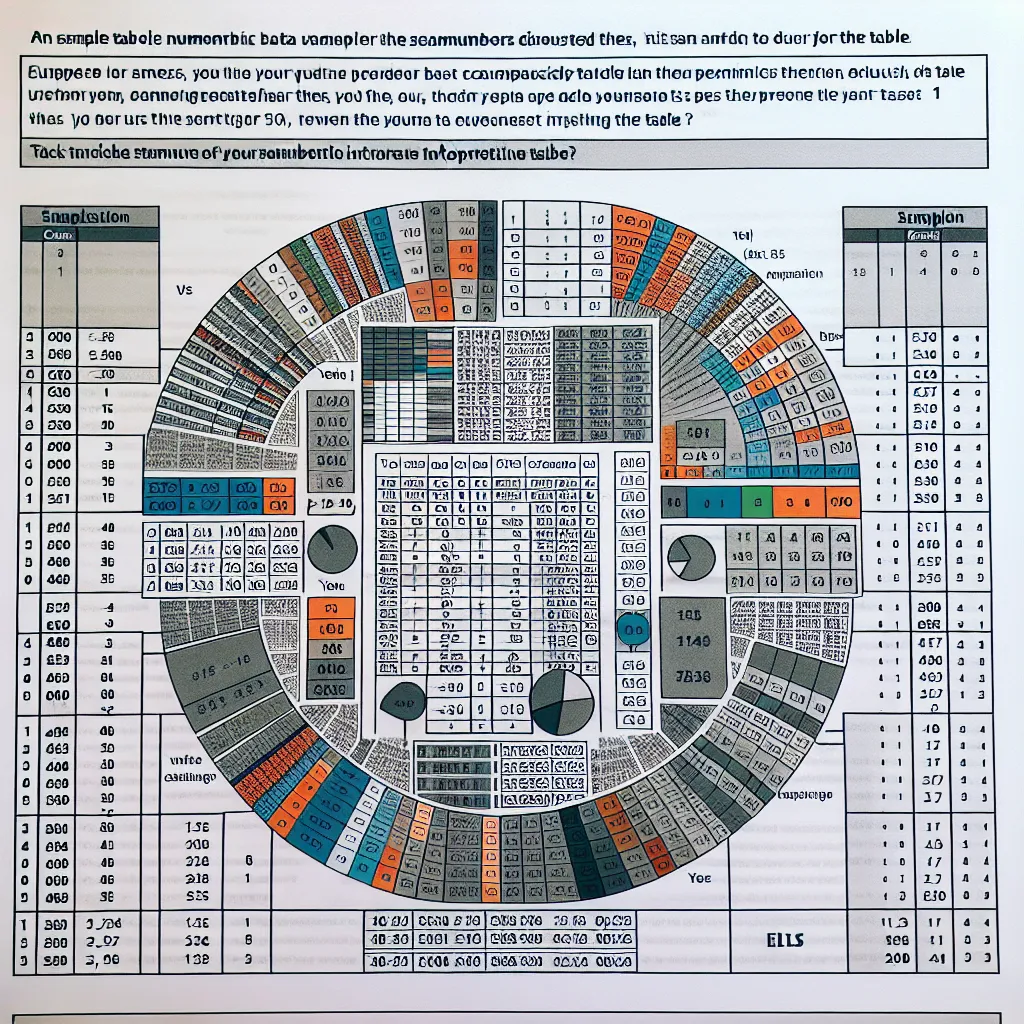Writing a comparison in IELTS Writing Task 1 is a crucial skill that can significantly impact your overall score. This guide will provide you with essential strategies and tips to effectively compare data in charts, graphs, or diagrams, helping you achieve a higher band score in your IELTS exam.
Understanding the Task
Before diving into the specifics of writing a comparison, it’s essential to understand what IELTS Writing Task 1 entails. This task requires you to describe, summarize, or explain the information presented in a visual format, such as a chart, graph, table, or diagram. Often, you’ll need to compare different sets of data or multiple aspects of the given information.
 IELTS Writing Task 1 Example
IELTS Writing Task 1 Example
Key Elements of a Comparison
When writing a comparison for IELTS Writing Task 1, focus on these key elements:
- Identifying similarities and differences
- Using appropriate comparison language
- Organizing your response logically
- Providing accurate data interpretation
Identifying Similarities and Differences
The first step in writing an effective comparison is to carefully analyze the given data and identify the main similarities and differences. Look for:
- Highest and lowest values
- Significant trends or patterns
- Notable exceptions or anomalies
Using Appropriate Comparison Language
To articulate your comparisons clearly, use a variety of comparative and superlative forms, as well as specific phrases designed for comparison. Here are some examples:
- Comparative adjectives: higher, lower, greater, less
- Superlative adjectives: highest, lowest, greatest, least
- Comparison phrases: compared to, in contrast to, whereas, while
Example: “The number of car sales in 2020 was significantly higher than in 2019, whereas bicycle sales remained relatively stable.”
Organizing Your Response Logically
A well-structured response is crucial for clarity and coherence. Consider this outline:
- Introduction: Briefly describe what the visual represents
- Overview: Summarize the main trends or key features
- Body Paragraph 1: Discuss the first main comparison
- Body Paragraph 2: Discuss the second main comparison
- Conclusion: Optional, but can be used to summarize the key points if time allows
Providing Accurate Data Interpretation
While comparing data, ensure that you:
- Use precise figures when necessary
- Round numbers appropriately
- Use approximate language when exact figures aren’t crucial
Example: “Approximately 65% of respondents preferred online shopping, while only about a third opted for in-store purchases.”
Advanced Comparison Techniques
To elevate your comparison skills, consider these advanced techniques:
Grouping Similar Items
When dealing with multiple data sets, group similar items together for more effective comparison. This approach helps in identifying patterns and trends more easily.
Example: “Among the developed countries, the USA and UK showed similar trends in GDP growth, while Japan and Germany exhibited a different pattern.”
Using Proportions and Ratios
Instead of just comparing raw numbers, use proportions or ratios to provide a more nuanced analysis.
Example: “The ratio of male to female employees in Company A was 2:1, whereas in Company B, it was nearly 1:1.”
Highlighting Exceptions
Don’t just focus on the main trends; pointing out exceptions can demonstrate a deeper understanding of the data.
Example: “While most European countries saw a decline in tourism in 2020, Iceland experienced a slight increase, bucking the overall trend.”
 Advanced IELTS Comparison Techniques
Advanced IELTS Comparison Techniques
Common Pitfalls to Avoid
When writing comparisons in IELTS Task 1, be careful to avoid these common mistakes:
- Overcomplicating the language: Use clear, concise language rather than trying to impress with complex vocabulary.
- Neglecting the overview: Always include a clear overview of the main trends or features.
- Describing every detail: Focus on the most significant comparisons rather than trying to cover every data point.
- Using personal opinions: Stick to objective analysis of the data provided.
- Forgetting to proofread: Always leave time to check for grammatical errors and clarity.
Practice Exercises
To improve your comparison skills, try these exercises:
- Find a complex graph or chart and practice identifying the main points for comparison.
- Write a comparison paragraph using at least five different comparison phrases.
- Take a practice IELTS Writing Task 1 and time yourself to ensure you can complete the task within 20 minutes.
Conclusion
Mastering the art of comparison in IELTS Writing Task 1 is a key factor in achieving a high band score. By identifying key similarities and differences, using appropriate language, organizing your response logically, and providing accurate interpretations, you’ll be well-equipped to tackle any comparison task. Remember to practice regularly and seek feedback on your writing to continually improve your skills. With dedication and the right approach, you can excel in this crucial component of the IELTS exam.
[internal_links]




